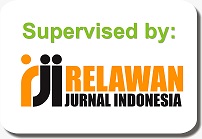SINERGI MULTI PIHAK CSR AQUA KLATEN DALAM UPAYA MELINDUNGI SUMBER MATA AIR SUB DAS PUSUR
Abstract
This study aims to analyze the multi-stakeholder synergy of AQUA Klaten's CSR in establishing a rescue program for the Pusur Sub-Regional water flows. This effort requires various parties to collaborate, setting a series of rescue programs from upstream to downstream of the Pusur River. This research was conducted in a qualitative approach through a case study method. The data were obtained from the results of observation, documentation, and interviews through purposive sampling technique. To obtain the final result, the researcher then analyzed the data by using a triangulated analysis of sources. The results of this study indicate that the multi-stakeholder synergy formed an organization called Pusur Institute, which encourage the establishment of integrated series on water sources saving programs. The success of this program depends on the responsibilities of each party. The formation of multi-stakeholder synergies can also reduce conflicts between companies and stakeholders.
Keywords
Full Text:
PDF (Bahasa Indonesia)References
Afandi, M., Zakaria, R., Wardoyo, A., Kusumastuti, A., Klaten, S. S., Sungai, P., & Integratif, P. (2018). Pendekatan integratif dalam pelestarian sub das pusur kabupaten klaten. (7), 349–361.
Damayanti, S., & Mahmudi, S. (2018). Hubungan Komunikasi Corporate Social Responsibility Dengan Reputasi Perusahaan. 16(1), 54–74.
Elkington, J. (1997). Cannibals with forks – Triple bottom line of 21st century business. Stoney Creek, CT: New Societ Publishers.
International Standart Organization (ISO 26000): Guide book
Mardikanto, Totok. 2014. CSR (Corporate Social Responsibility) Tanggung Jawab Sosial Korporasi. Bandung (ID) : Alfabeta.
Moleong, L.J. 2012. Metodologi Penelitian Kualitatif. Bandung: Remaja Rosdakarya.
Michael, R., Raharjo, S. T., & Resnawaty, R. (2019). Program Csr Yayasan Unilever Indonesia Berdasarkan Teori Triple Bottom Line. Focus : Jurnal Pekerjaan Sosial, 2(1), 23. https://doi.org/10.24198/focus.v2i1.23116
Nurjanah, A., & Nurnisya, F. Y. (2019). Pelaksanaan Program Corporate Sosial Responsibility (Csr) Dan Komunikasi Csr. Profetik: Jurnal Komunikasi, 12(1), 93. https://doi.org/10.14421/pjk.v12i1.1542
Rasyid, A., Saleh, A., Cangara, H., & Priatna, W. B. (2015). Komunikasi dalam CSR Perusahaan: Pemberdayaan Masyarakat dan Membangun Citra Positif. MIMBAR, Jurnal Sosial Dan Pembangunan, 31(2), 507. https://doi.org/10.29313/mimbar.v31i2.1564.
Sugiantoro, H. A. (2016). Bisnis Mengakomodasi Kepentingan Pemerintah Dan Masyarakat. 368
Tamvada, M. (2020). Corporate social responsibility and accountability: a new theoretical foundation for regulating CSR. International Journal of Corporate Social Responsibility, 5(1). https://doi.org/10.1186/s40991-019-0045-8
UU No. 40 Tahun 2007 Pasal 74 Tentang Perseroan Terbatas (PT)
Wati, Lela Nurlaela. 2019. Model Corporate Social Responsibility (CSR). Google Playbook.
Wijayanti, R., Baiquni, M., & Harini, R. (2016). Strategi Penghidupan Berkelanjutan Masyarakat Berbasis Aset di Sub DAS Pusur, DAS Bengawan Solo. Jurnal Wilayah Dan Lingkungan, 4(2), 133. https://doi.org/10.14710/jwl.4.2.133-152
Zakaria, R. (n.d.). “ Aksi Kolektif Pengelolaan Sub -DAS Pusur Sebagai Upaya Mitigasi Bencana Lingkungan Berbasis Masyarakat .”
Zakaria. R. 2012. Assessing The Strategy of Collective Action In Integrated Water Resources Management. Case Study in Pusur Sub Watershed, Klaten District. Centre of Java Province, Indonesia. SupAgro Montpellier.French
DOI: https://doi.org/10.32528/mdk.v4i2.5858
Copyright (c) 2021 MEDIAKOM

This work is licensed under a Creative Commons Attribution-NonCommercial-ShareAlike 4.0 International License.








